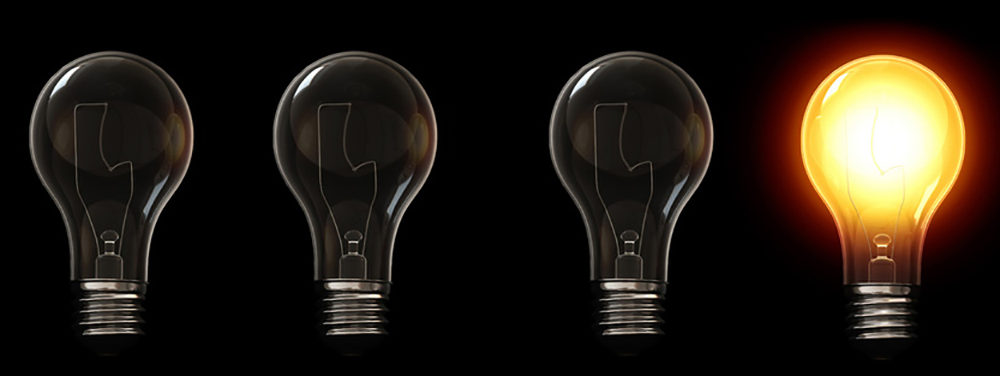Parshot/Festivals
Let there be light: Can Eskom offer a miracle?

It’s the key question to a more stable South Africa – can Eskom keep the lights on? In the Chanukah story, one drop of oil lasted eight days, but it’s unlikely that the power utility can pull off a similar miracle.
“The reality is that the business of Eskom is fundamentally unsustainable: financially, operationally, and environmentally,” says Chris Yelland, an energy analyst, consultant, electrical engineer, public speaker, writer, and the managing director at EE Business Intelligence. His company aims to be a positive influence in the energy, electricity, and ICT (information and communications technology) sectors in Africa.
“Eskom has quite clearly indicated that in the short term, we can expect ongoing intermittent load shedding for at least the next three years,” he says. “This will be until a sufficient generation capacity reserve margin has been built to enable Eskom to do the necessary maintenance and rectification work at Medupi and Kusile without having to shut down the plants.”
The outlook for 2022 is somewhat worse than this year. “And this year has been worse than the previous year. Next year, Koeberg Power Station will undergo the replacement of its steam generators, which means that each reactor has to be shut down for five months, sequentially, which means 10 months without 900 megawatts of generation capacity. This is going to increase the pressure, and will mean more load shedding.”
So is there any hope? “In the longer term, if we can bring on new generation capacity to fill the 5 000 megawatt gap that exists at present, and we don’t delay public procurement – as has been happening at the moment – and we allow the private sector to become part of the solution, I think we can look forward to a reduction of load shedding,” says Yelland.
“There’s certainly no miracle cure for South Africa’s electricity problems,” he says. “We have to do the right thing for a long time in order to resolve these issues. Any thought that you can snap your fingers or change the chief executive and everything will come right, is simply a pipe dream.”
Addressing that debate whether Eskom Chief Executive André de Ruyter should be fired, he says, “Firing or replacing the CEO makes absolutely no sense, because all the fundamental issues will still remain after he has been replaced. It takes a long time to rectify problems which have developed over the past 20 years. One cannot expect that the CEO can resolve the issues in the somewhat less than two years that he’s been in office.”
Not only that, “but most of the issues that need to be dealt with are outside of his control. Financial issues and debt are the responsibility of the shareholder and national treasury. Bringing on new generation capacity is the responsibility of the department of mineral resources and energy. Things that are under Eskom’s control are Medupi and Kusile, and Eskom is busy trying to sort out legacy problems. But that means shutting down generators at Medupi and Kusile in order to fix the design problems, which means more load shedding.”
Similarly, the necessary maintenance on aging power stations requires generators to be shut down. “There’s not much that De Ruyter can do in the short term, because the issues are largely outside of his control. The new generation capacity to provide the necessary reserve margin has to come from new procurements – public procurements as well as private technical procurements, which are really out of De Ruyters’ hands.”
Speaking at an event hosted by the Ahmed Kathrada Foundation in partnership with the Wits School of Governance on 20 November, De Ruyter said that state capture was still a reality at Eskom. He said it was difficult to fire people, and “those with vested interests would look out for one another. The culture of impunity and entitlement surprised me [when I first arrived at Eskom]. It’s as though people have the approach that if they have been at Eskom for many years, you cannot get rid of them.”
He said Eskom’s board still lacks experts like an engineer and a chartered accountant to oversee management. “We still have bad actors in the company, but not anymore at executive level, I think. We are making progress, but not by a long stretch are we able to declare victory.”
Independent analysts have backed De Ruyter’s claims of sabotage at Eskom, with multiple incidents of malicious damage experienced across Eskom’s operations. Experts say the claims come from various sources, and the culprits are likely low-level managers. The consistent pattern of breakdown is unlikely to be maintenance-related.
Looking into the financial problems Eskom faces, Yelland says, “At the debt level, the debt service cover ration of Eskom is 0.5, which means that its net earnings can meet only 50% of its debt service commitments. This means that it’s completely unsustainable, and can operate only through regular bailouts of about R50 billion a year from the shareholder government.”
Then there are the operational and environmental challenges. “Operationally, we know that it’s in poor shape, with regular load shedding,” he says. “Environmentally, we know that Eskom cannot operate without exemptions from the law. In other words, literally all its coal-fired power stations are operating outside of the law and require an exemption from the law in order to continue operating.”
What can be done, and can ordinary citizens play a role? “My message to all customers of electricity is that you need to start to take ownership of your own energy future and become part of the solution,” says Yelland. “We cannot simply expect that Eskom or the government is the solution to all our problems. We need to understand that we have to take responsibility to secure our own energy future in our own interests.”